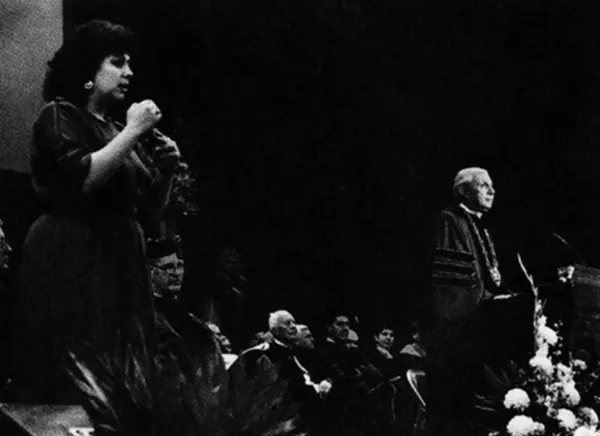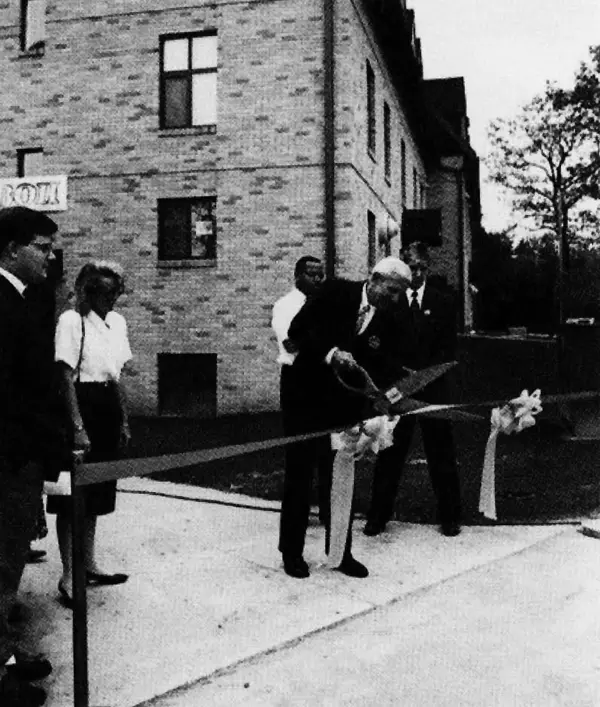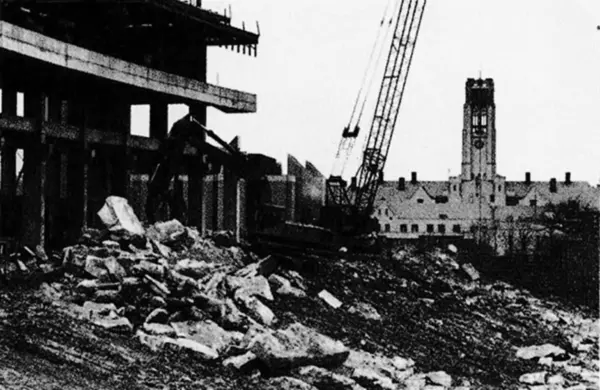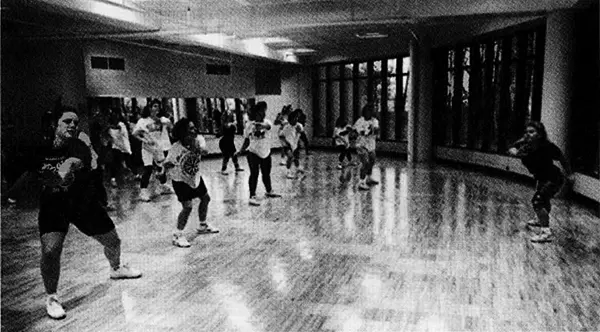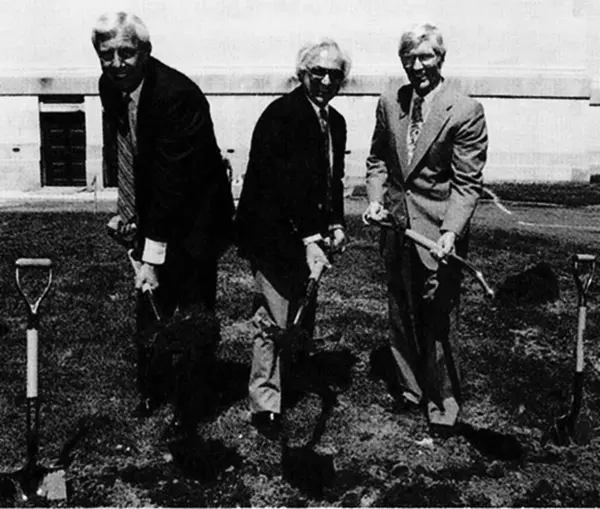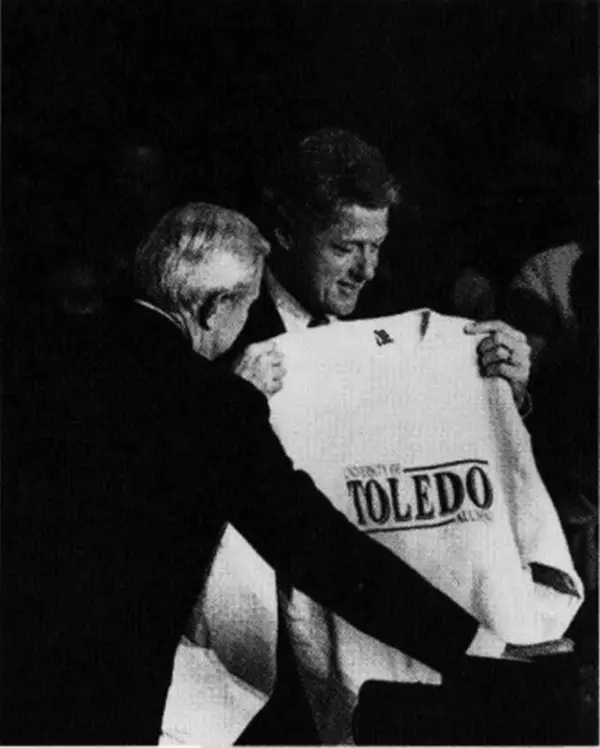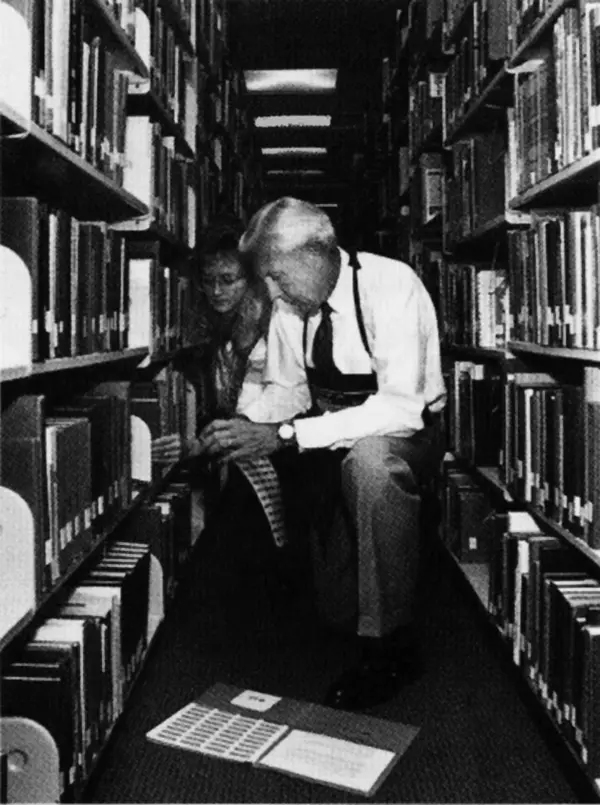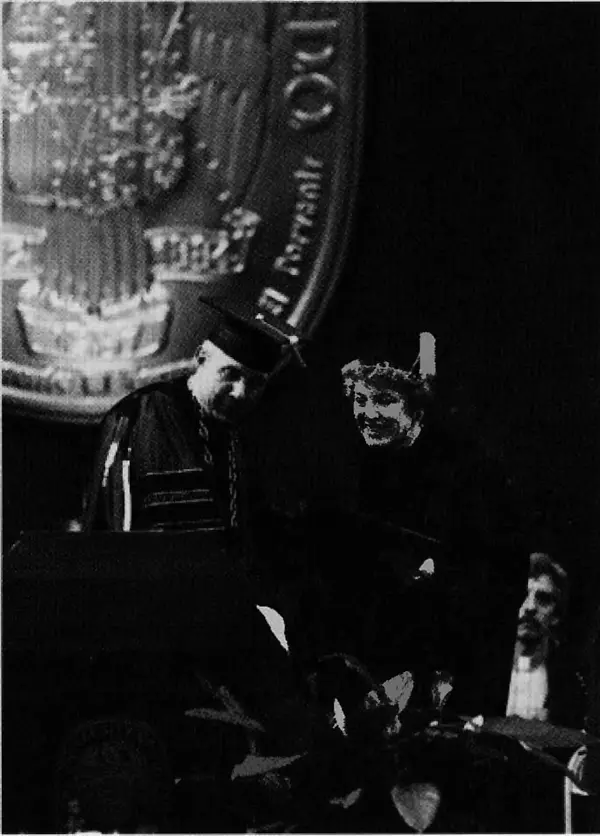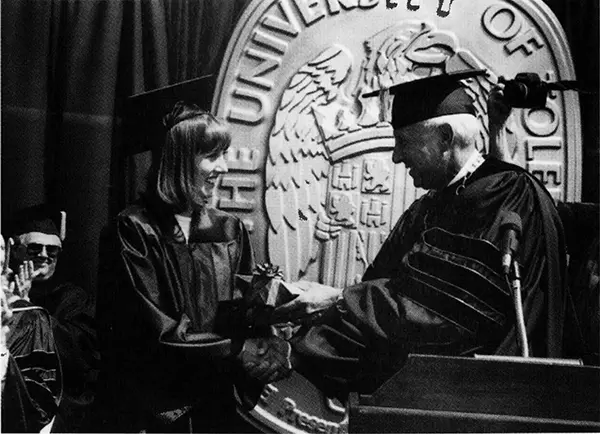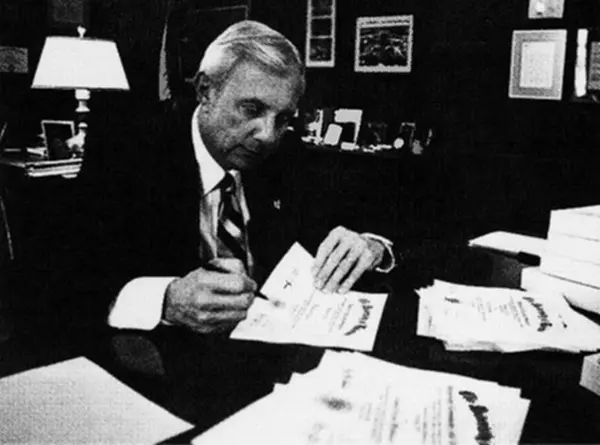Chapter 5. The 1990s and Beyond
The inauguration ceremony for Dr. Frank E. Horton, April 13, 1989.
Dr. Frank E. Horton, president of the University of Oklahoma, was selected the University of Toledo’s thirteenth president in October 1988. His presidency would face many challenges. The phenomenal growth of UT that began in 1967 and continued apace for 20 years could not be sustained indefinitely. The 1990s brought declining enrollments, periodic economic recessions, financial struggles, and a leveling-off of state support.
The dedication ceremony for the fraternity and sorority housing complex (later named James D. McComas Village), 1990.
To meet the challenges of the 1990s, Dr. Horton began a lengthy strategic planning effort to chart a course of targeted, purposeful growth. A steering committee oversaw the work of ten special task forces. Each task force created a specific action plan. To help achieve the plan’s many goals, in 1993 the university launched a $40 million fundraising campaign called UT40.
As part of the renovation of the Glass Bowl Stadium, older sections of the seats are demolished to make room for the new, 1991.
An aerobics class in the new Student Recreation Center, 1991 .
The university continued to expand its physical environs in the 1990s. A new Academic Center and Residence Hall (1992) was built to house a university-wide Honors Program. Other new buildings included the Student Medical Center (1992), the Center for the Visual Arts at the Toledo Museum of Art (1992), the International House Residence Hall (1995), and Nitschke Hall (1995). Another major expansion of the campus took place in 1990 when UT leased space that had housed a shopping center at Dorr Street and Secor Road. The Southwest Academic Center, as it was named, was purchased by UT in 1995 and will undergo additional renovation. And construction began in 1995 on a Pharmacy, Chemistry, and Life Sciences complex adjacent to Bowman-Oddy Laboratories.
President Horton, architect Frank Gehry, and Toledo Museum of Art director David Steadman participate in the groundbreaking for the Center for Visual Arts in 1991. The building, attached to the museum, houses the university's art classes.
Some new programs were added to the curriculum, including a master’s degree in liberal studies, a women’s studies program, a Ph.D. in manufacturing management, and a Ph.D. in bioengineering. But at the same time, some long-standing doctoral programs were threatened when the Ohio Board of Regents sought to reduce the cost of graduate education in the state.
Future U.S. President Bill Clinton visited UT while on the campaign trail in 1992. (Photo by Liz Brandt)
Some of the most significant growth in the 1990s was not in buildings or academic programs, but in technology. The university joined OhioLINK, a statewide library network, in 1994. The network allows UT students to access and borrow books from all other member institutions throughout the state and utilize a wide array of research services. Computer labs and hook-ups in dormitories and offices provide Internet access to many students and most faculty. Technological improvements allow students to register for classes and check their grades by phone. The university established a homepage on the World Wide Web. Such innovations are certain to continue throughout the decade.
The first efforts in Carlson Library's automation project required that each book in the library's holdings have a barcode attached. President Horton showed his support for the project in 1991 . (Photo by Liz Brandt.)
But despite strategic planning and important improvements in physical spaces and technology, many challenges remain. State support for higher education must compete with other government demands like prisons and primary and secondary education. An improving economy in northwest Ohio and the growth of other institutions of higher learning in the area has produced competition for a declining pool of students. This competitive environment forced UT to take a close look at how it provided services to students and find better ways to attract and keep students. One major change is a switch from the 20-year old quarter system to semesters to allow for more cooperative programs with other universities.
U. S. Representative Marcy Kaptur receives an honorary degree from President Horton at the December 1993 commencement ceremony. (Photo by Liz Brandt)
On June 11, 1994, Kimberly Urban received the 100, 000th degree awarded by UT. (Photo by Bill Hartough)
Critics of higher education, who became more numerous and vocal in the 1980s, continue unabated in the 1990s. Government leaders, the press, and ordinary citizens have questioned the size, cost, politics, and goals of higher education. UT was not spared such criticism. Faculty members who felt they did not have a voice in university affairs voted in 1992 for collective bargaining representation by the American Association of University Professors. This has further strained the relationship between the administration and the faculty as each assumed new and often adversarial roles.
President Horton signs each of the diplomas handed out at commencement, 1993.
But a program undertaken jointly by Dr. Horton and the Faculty Senate in 1997 seeks to bring representatives from all sectors of the university community together in a series of discussions focused around the central challenges of higher education in the 1990s and beyond. From these discussions may come the themes that will shape the next 125 years of University of Toledo history.
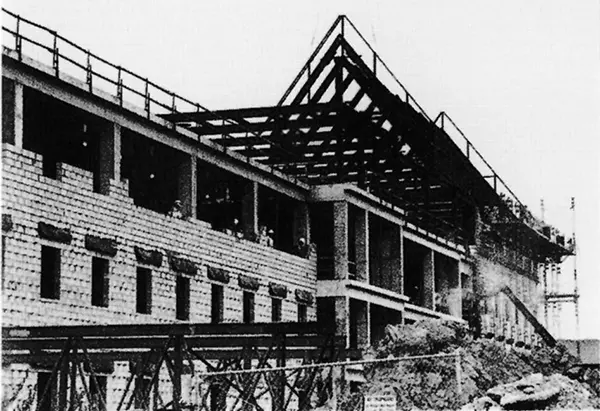 Construction progresses on the new Pharmacy, Chemistry, and Life Sciences building, 1996.
Construction progresses on the new Pharmacy, Chemistry, and Life Sciences building, 1996.

